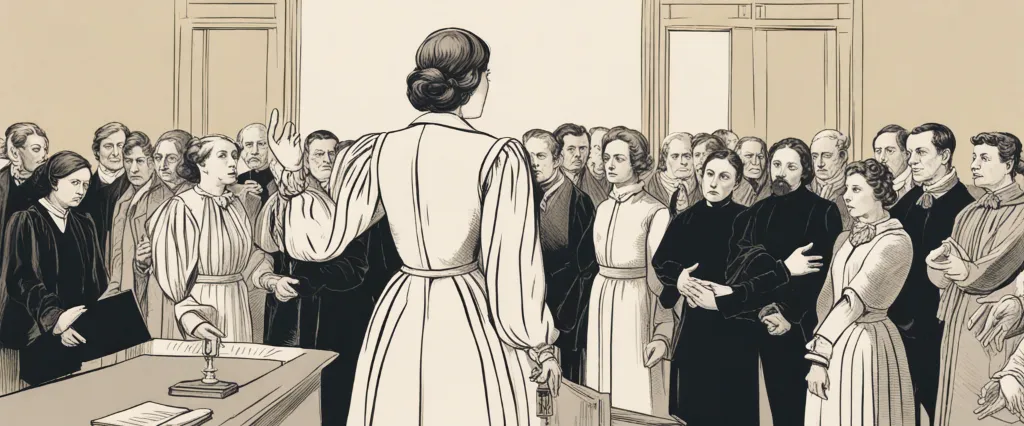In the captivating biography “Isabella,” author Kirstin Downey shines a much-needed spotlight on one of history’s most influential and extraordinary figures, Isabella of Castile. By delving into the life of this remarkable queen, Downey unveils a complex portrait of a woman who defied societal expectations and left an indelible mark on the world. With meticulous research and vivid storytelling, Downey presents a compelling narrative that illuminates Isabella’s groundbreaking achievements, unwavering determination, and lasting legacy. A renowned journalist and author, Kirstin Downey brings her expertise in historical research and storytelling to vividly capture the essence and impact of Isabella’s life in this enthralling biography.
Chapter 1: Early Life and Education
Chapter 1 of the book “Isabella: The Warrior Queen” by Kirstin Downey provides a detailed account of the early life and education of Queen Isabella of Castile, one of the most influential rulers in history. The chapter sets the stage for Isabella’s future accomplishments by exploring her childhood, family background, and educational experiences.
Isabella was born on April 22, 1451, in the town of Madrigal de las Altas Torres, Spain. She was the second child of John II of Castile and Isabel of Portugal, and her lineage boasted both Portuguese and Castilian royal blood. However, Isabella’s childhood was not filled with luxury and privilege. She came from a relatively modest background, with a small royal court and limited financial resources.
Despite these circumstances, Isabella received an excellent education, which was unusual for a woman at that time. Her mother, Isabel of Portugal, played a significant role in her education, ensuring that she studied subjects such as arithmetic, music, dancing, and decorum. Isabella also learned Latin, a language typically reserved for males.
Her education aimed to prepare her for the roles of wife and queen. Isabella learned the skills required for administering a household, managing finances, and maintaining order within society. Her tutors emphasized the importance of piety and moral virtue, instilling in her a strong sense of duty toward her faith.
Isabella’s education also involved studying history, which acquainted her with the political landscape of Europe and the complex power dynamics of her time. She learned about the struggles between Christians and Muslims in the Iberian Peninsula and the importance of uniting the divided kingdoms against a common enemy.
Overall, Chapter 1 highlights Isabella’s early life and the foundations laid during her education. Her upbringing, combined with her access to knowledge and the shaping of her character, would later lead her to become a formidable ruler who greatly influenced Spain’s history.
Chapter 2: Marriage and Queenship
Chapter 2 of “Isabella” by Kirstin Downey delves into the early life of Queen Isabella of Castile, focusing on her marriage and ascent to queenship in 1469. The chapter explores the intricate dynamics of late medieval Europe and the strategic alliances formed through marriage.
At just seventeen, Isabella becomes a crucial pawn in the political ambitions of her half-brother King Henry IV of Castile. Downey sheds light on the instability within the kingdom, with factions vying for power and control. Isabella’s own half-brother Alfonso, also a contender to the throne, dies under suspicious circumstances, positioning Isabella as the legitimate heiress.
The chapter provides historical context by discussing the complex marriage negotiations between Isabella and Ferdinand of Aragon, the prince of a powerful neighboring kingdom. Their union represents a consolidation of power between two affluent royal families, promising newfound stability and unity in a divided Spain.
Downey offers insight into the personalities of Isabella and Ferdinand, noting their shared values and deep religious faith. The marriage becomes a partnership based on mutual respect and the pursuit of common goals. Together, they aim to restore peace, strengthen the royal power, and expel the Moors from their territories, thus fulfilling their shared vision of a Catholic Spain.
Finally, the chapter explores Isabella’s struggle to claim her rightful place as queen and secure her throne. Despite resistance from the nobles, Isabella proves her determination and strength, earning the support of many through her fair and just rule. Her successful navigation of the political landscape paves the way for a remarkable reign that would greatly impact the course of European history.
Chapter 2 of “Isabella” provides a captivating account of how Isabella’s marriage and queenship shape the trajectory of her reign, setting the stage for the subsequent chapters that delve into her remarkable accomplishments and significant influence.
Chapter 3: The Reconquista
Chapter 3 of the book “Isabella” by Kirstin Downey focuses on the historical period known as the Reconquista. This chapter delves into the efforts made by the Christian kingdoms in medieval Spain to reclaim their territories from the Islamic Moors who had occupied them for centuries.
The Reconquista began in the 8th century and continued for several centuries, with various kingdoms such as Castile, Aragon, and Navarre gradually pushing back the Moors. The chapter starts by highlighting the influence of a powerful noblewoman, Teresa of León, who played a vital role in expanding the Christian territories.
Teresa’s efforts were followed by King Alfonso VI of León and Castile, who successfully captured the strategic city of Toledo in 1085. He invited Jewish and Muslim intellectuals to the city, fostering a multicultural environment that would significantly influence Isabella’s education in the future.
Isabella’s family, the Trastámara, also actively participated in the Reconquista, and the chapter emphasizes their efforts to regain the crown of Castile from their rivals, the Aviz dynasty. The author describes the violent and complex politics of the time, including betrayals and alliances, as the Trastámara sought to solidify their power.
Furthermore, the chapter provides an overview of the military tactics employed during the Reconquista, such as the use of castles and fortified towns. It also underscores the technological advancements made by the Christians, including the introduction of gunpowder and cannons, which played a crucial role in their victories.
In summary, Chapter 3 of “Isabella” delves into the historical context of the Reconquista, chronicling the efforts of various kingdoms and noble families to reclaim their territories from the Islamic Moors. It highlights key figures, events, and military tactics, setting the stage for the subsequent chapters that delve into Isabella’s life and her impact on the history of Spain.
Chapter 4: The Spanish Inquisition

Chapter 4 of the book “Isabella” by Kirstin Downey takes readers into the era of the Spanish Inquisition during the reign of Isabella of Castile. Downey provides a deep analysis of Isabella’s decision to establish the Inquisition and its impact on her legacy.
The chapter initially explores the historical context of the Inquisition, highlighting the political and religious climate in Spain at the time. Isabella’s motivations for establishing the Inquisition are complex; she aimed to protect Spain from heresy, maintain religious unity, and strengthen her own authority. Downey delves into the mindset of Isabella and her advisors, outlining their beliefs that religious purity was essential for a prosperous state.
The chapter then delves into the methods and practices utilized during the Spanish Inquisition. It explains how the inquisitors were given extensive powers to investigate, prosecute, and pass judgment on individuals accused of heresy. Downey underscores how the Inquisition targeted not only individuals practicing Judaism, but also Muslims, converts from Islam and Judaism, and those suspected of secretly observing their old faith.
The impact of the Spanish Inquisition on the Jewish population is a major focus of this chapter. Downey narrates heartbreaking stories of families torn apart, properties seized, and lives destroyed. Isabella’s desire to maintain religious purity led to the expulsion of Jews who did not convert to Christianity, which caused widespread suffering and dislocation. Downey expertly explores the complexities of Isabella’s decisions and their long-lasting consequences.
By the end of the chapter, readers gain a nuanced understanding of Isabella’s stance on religious purity and the establishment of the Inquisition. Downey emphasizes that while Isabella may have genuinely believed she was preserving the integrity of the Catholic faith, her actions resulted in immense human suffering and a dark legacy that continues to shadow her reign.
Chapter 5: Columbus and the New World
Chapter 5 of the book Isabella by Kirstin Downey focuses on Christopher Columbus and his journey to the New World. The chapter discusses the historical events leading up to his voyage, as well as the various challenges he faced in obtaining funding and support for his expedition.
Downey begins by highlighting the historical context surrounding Columbus’ expedition. The Reconquista had just been completed, with Catholic Queen Isabella and King Ferdinand successfully reclaiming their territories from the Muslims. With this victory, the monarchs sought new opportunities for expansion and wealth, which led them to support Columbus’ proposal of reaching the Indies by sailing west.
The chapter delves into Columbus’ negotiations with the Spanish monarchs to secure funding for his expedition. Columbus faced multiple rejections and skepticism from the Spanish court, as many believed his plan to reach the Indies was unrealistic. However, Queen Isabella’s curiosity and desire for exploration eventually won her over, and she granted Columbus the support he needed.
The chapter also explores the challenges faced by Columbus during his voyage. Columbus and his crew encountered harsh weather conditions, limited resources, and a mutinous crew. Despite these obstacles, Columbus persevered and finally, on October 12, 1492, he sighted land in the present-day Bahamas, thus discovering the New World.
In summary, Chapter 5 of Isabella by Kirstin Downey provides an in-depth examination of Christopher Columbus’ journey to the New World. It discusses the historical background, the difficulties Columbus faced in obtaining funding, and the challenges he encountered during the voyage. This chapter showcases the determination and courage of Columbus, as well as the support he received from Queen Isabella, which ultimately led to the discovery of a whole new continent.
Chapter 6: Cultural and Intellectual Patronage
Chapter 6 of the book Isabella by Kirstin Downey, titled “Cultural and Intellectual Patronage,” explores Isabella’s significant role in promoting and nurturing the arts, as well as her intellectual pursuits. Isabella of Castile, who reigned as queen from 1474 to 1504, had a deep appreciation for the arts and a desire to elevate Spain’s cultural and intellectual standing.
The chapter begins by highlighting Isabella’s efforts to attract prominent thinkers, writers, and artists to her court. She recognized the value of their contributions to the nation’s development and sought to create an environment that encouraged their work. Isabella is credited with establishing numerous schools, universities, and libraries, thereby promoting education and intellectual growth.
Furthermore, the chapter discusses Isabella’s patronage of the arts, particularly painting and architecture. She invited renowned artists, such as the Flemish painter Hieronymus Bosch and Spanish painter Pedro Berruguete, to her court, commissioning them to create works of art that captured the essence of her reign.
Additionally, Isabella played a vital role in supporting the printing press, which revolutionized the dissemination of knowledge. She encouraged the translation and publication of influential texts, making them more accessible to the Spanish public. Isabella’s commitment to intellectual pursuits and patronage of the arts helped solidify Spain’s cultural identity in Europe and fostered a climate of creativity and enlightenment.
Overall, Chapter 6 underscores Isabella’s active role in promoting cultural and intellectual advancements in Spain. Her dedicated support for the arts, education, and the free flow of ideas had a lasting impact on the nation and left a remarkable legacy that continued beyond her reign.
Chapter 7: Political Challenges and Legacy
Chapter 7 of the book “Isabella: The Warrior Queen” by Kirstin Downey focuses on the political challenges and the legacy of Isabella of Castile. This chapter explores the various political obstacles Isabella faced during her reign, as well as the lasting impact she left on Spain.
One of the major political challenges Isabella faced was the constant threat of rebellion and usurpation. Her power as a female monarch was often questioned and challenged, leading her to be targeted by various political factions. Despite these challenges, Isabella proved herself to be a skilled and determined ruler, successfully navigating these threats and securing her position on the throne.
Another key political challenge Isabella faced was the need to unify various regions of Spain under her rule. She sought to create a centralized monarchy by incorporating the independent realms, such as Aragon and Granada, into her kingdom. Isabella skillfully negotiated alliances and waged wars to achieve this goal, ultimately leading to the consolidation of Spain as a powerful nation-state.
Isabella’s legacy is a significant part of this chapter. Her reign marked a turning point in Spanish history, characterized by a strong central authority and a drive for territorial expansion and exploration. Isabella’s support for Christopher Columbus’s voyage in search of new trade routes to Asia resulted in the discovery of America, opening up a new era of exploration and colonization.
Additionally, Isabella’s religious zeal and her determination to bring all of Spain under Catholic rule left a lasting impact on the country. She established the Spanish Inquisition and issued decrees expelling Jews and Muslims from Spain, which had significant social and cultural repercussions.
In summary, Chapter 7 delves into the political challenges Isabella faced as a female monarch, her success in unifying Spain, and the consequential legacy she left behind. Isabella’s reign was a turning point in Spanish history, shaping the country’s political structure, international influence, and religious landscape.

Chapter 8: The End of an Era
Chapter 8: The End of an Era of the book Isabella by Kirstin Downey marks a significant turning point in the life of the remarkable Isabella Baumfree, later known as Sojourner Truth. This chapter delves into the final years of Isabella’s long and impactful life, as she navigates the changing political and social landscape of the mid-nineteenth century United States.
As the chapter begins, Isabella finds herself increasingly alienated from her old abolitionist allies due to stark ideological differences. She is disheartened by the exclusionary nature of many abolitionist organizations that limit participation based on gender, race, or class. Isabella, now in her seventies, becomes more focused on her own spiritual journey rather than actively participating in social reform movements.
Nonetheless, Isabella’s passionate speaking style and her rich personal experiences continue to make her a revered figure among those who witness her lecturing about her life as a former slave and her fight for justice. Her speeches attract diverse crowds, and she often shares platforms with other notable activists of the time, including Frederick Douglass and Elizabeth Cady Stanton.
In her final years, Isabella faces personal tragedies, losing her grandson and her youngest daughter. These losses weigh heavily on her, but she persists in her religious convictions and still manages to find comfort and strength in her faith.
As the chapter concludes, Isabella continues to travel alone, offering solace and guidance to those she encounters. Her voice resonates with deep conviction, inspiring those around her to confront the injustices perpetuated by slavery and other societal prejudices.
In Chapter 8, readers witness the end of an era in Isabella’s life, where she confronts personal losses and disappointment but remains resolute in her desire to bring about positive change. Despite the challenges she faces, Isabella’s unwavering dedication to equality and justice leave an indelible mark on the fight for civil rights in America.
After Reading
In conclusion, Kirstin Downey’s book Isabella offers a comprehensive and engaging portrayal of the life and accomplishments of Isabella of Castile. Downey skillfully depicts Isabella’s rise to power, emphasizing her political astuteness and determination to unify Spain. The biography delves into Isabella’s personal life, exploring the complexities of her relationship with her husband Ferdinand and her role as a mother. Downey also highlights Isabella’s efforts to promote education, religious orthodoxy, and exploration. Overall, Isabella provides a captivating and well-researched account of a powerful and influential queen whose legacy continues to resonate today.
1. The Diary of a Young Girl” by Anne Frank – This powerful memoir follows the life of Anne Frank, a Jewish girl hiding with her family during World War II. Like “Isabella,” it offers a strong female perspective, detailing the challenges and triumphs of a young girl facing extraordinary circumstances.
2. “Hidden Figures” by Margot Lee Shetterly – Inspired by true events, “Hidden Figures” tells the remarkable untold story of the African-American women mathematicians who played a vital role at NASA during the space race. Just like “Isabella,” this book sheds light on the overlooked contributions and achievements of remarkable women.
3. The Immortal Life of Henrietta Lacks” by Rebecca Skloot – This breathtaking work of non-fiction unravels the story of Henrietta Lacks, a woman whose cells were unknowingly harvested for medical research. With themes of exploitation and resilience, it beautifully delves into the life of a remarkable woman whose legacy still impacts the medical world today.
4. “The Glass Castle” by Jeannette Walls – A memoir that explores the author’s tumultuous childhood, “The Glass Castle” showcases the strength and resilience of a young girl and her siblings growing up in poverty with unconventional parents. Like “Isabella,” it delves into the complexities of family dynamics and the courage it takes to overcome adversity.
5. “Wild Swans: Three Daughters of China” by Jung Chang – This memoir tells the story of three generations of women in China, spanning the oppressive rule of Mao Zedong to the present day. Like “Isabella,” it highlights the transformative power of women’s stories, providing a personal account of historical events and the indomitable spirit of the female experience.




